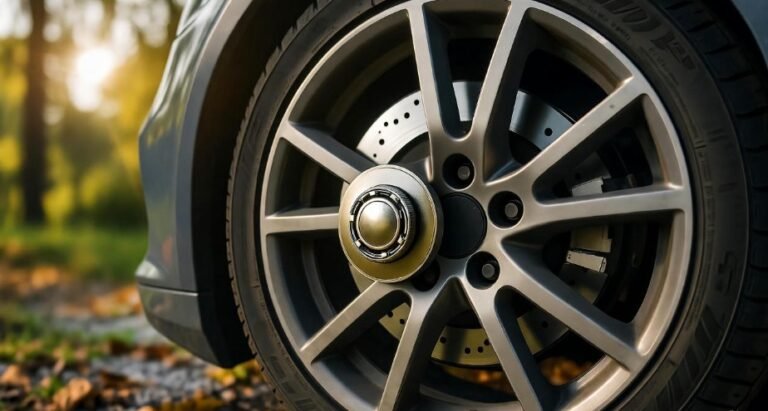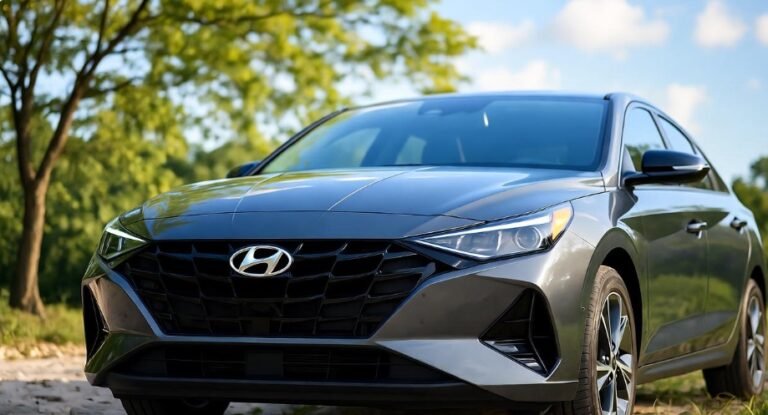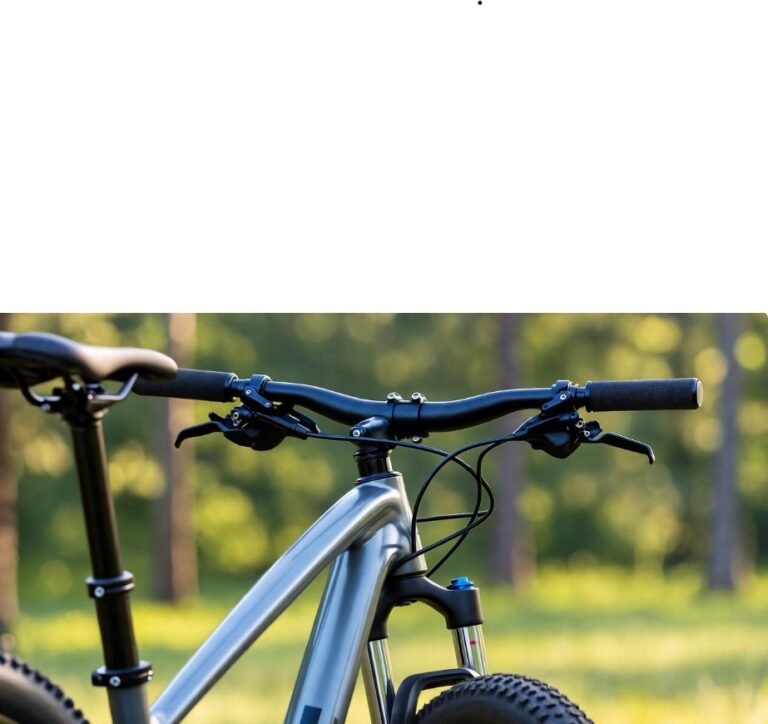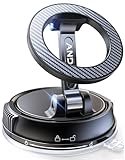Cycle Under 6000 With Disc Brake: Top Picks
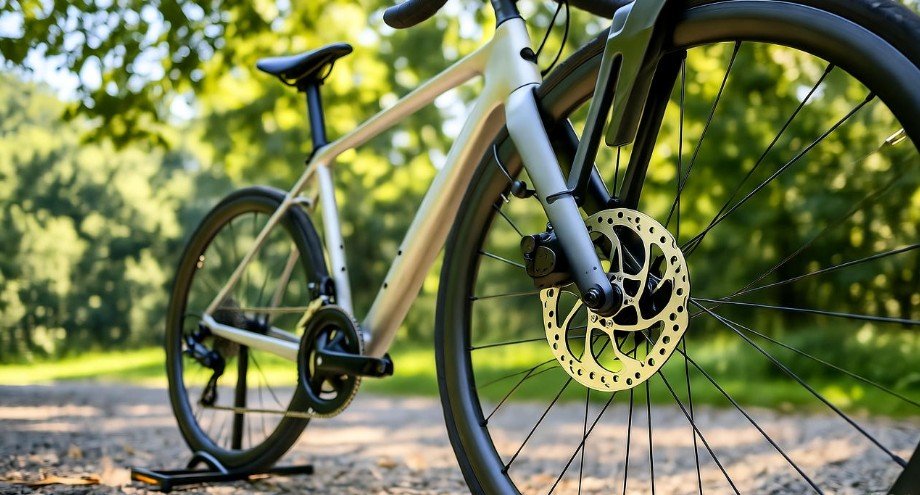
Find your perfect cycle under $6000 with disc brakes! This guide expertly breaks down top picks, focusing on performance, value, and features for every rider.
Key Takeaways
- Discover top cycle models under $6000.
- Understand essential disc brake benefits.
- Compare features for varied cycling needs.
- Make an informed purchase decision.
- Ride with confidence and improved braking.
Searching for a new bicycle can feel overwhelming, especially when you’re looking for a specific set of features like reliable disc brakes and a price point under $6000. Many cyclists dream of a ride that offers superior stopping power in all conditions, a smooth performance, and excellent value for their investment. You might be confused by the sheer variety of options, the technical jargon, and how to know which bike truly fits your needs. Don’t worry; we’re here to simplify the process. This comprehensive guide will walk you through everything you need to know to select the best cycle under $6000 with disc brakes. Get ready to find your ideal two-wheeled companion!
Why Disc Brakes Are a Game-Changer for Your Ride
When we talk about cycles under $6000 with disc brakes, it’s important to understand why this feature is so desirable. Disc brakes offer a significant upgrade over traditional rim brakes. They work by squeezing brake pads against a rotor attached to your wheel’s hub, rather than squeezing the rim itself. This system provides more consistent and powerful braking, especially in wet or muddy conditions. For anyone who rides in varied weather or tackles challenging terrain, disc brakes are a must-have. They require less hand effort to achieve strong braking and are generally more durable.
The National Highway Traffic Safety Administration (NHTSA) emphasizes the importance of reliable braking systems for road safety. While disc brakes are standard on many modern vehicles, their adoption on bicycles has revolutionized performance and safety. For a bicycle that costs under $6000, you can expect to find high-quality disc brake systems, often hydraulic, which offer precise modulation and incredible stopping power. This means you can brake later, stop more surely, and descend hills with much greater confidence. Let’s explore what makes a cycle under $6000 with disc brakes a fantastic investment.
Understanding Key Features in Your Disc Brake Bicycle Search
Before diving into specific models, let’s break down the critical components and features that make a difference in a bicycle, especially when aiming for that sweet spot of under $6000 with disc brakes. These elements will help you evaluate different options and understand what you’re getting for your money.
Frame Materials: The Foundation of Your Bike
The material of your bike’s frame significantly impacts its weight, stiffness, ride quality, and cost. For bikes in the sub-$6000 range, you’ll primarily encounter these materials:
- Aluminum Alloys: Lightweight, stiff, and affordable. Modern aluminum frames are well-designed and offer excellent performance for most riders. They are a popular choice for road, gravel, and mountain bikes.
- Carbon Fiber: The premium choice for many high-performance bikes. Carbon fiber is incredibly lightweight and can be engineered for specific stiffness and compliance characteristics, offering a very smooth and fast ride. It’s often found on higher-end models within the $6000 budget.
- Steel: Known for its compliance and durability, steel offers a comfortable ride, though it’s typically heavier than aluminum or carbon fiber. It’s often found on touring or some adventure bikes, valued for its smooth feel over long distances.
Drivetrain Components: Shifting and Power Transfer
The drivetrain includes your shifters, derailleurs, crankset, and cassette. Reputable brands like Shimano and SRAM dominate this space. For a bike under $6000, you can expect mid-to-high-tier groupsets that offer smooth, reliable shifting. Key differentiators include:
- Number of Gears: More gears offer finer control over your cadence, useful for varied terrain.
- Shifter Type: Integrated brake/shift levers (road bikes) vs. separate shifters (mountain/gravel bikes).
- Electronic Shifting: Increasingly common at this price point, offering incredibly precise and fast shifts.
Wheelsets and Tires: Connecting You to the Road
Your wheels and tires are crucial for comfort, grip, and rolling resistance. For disc brake bikes, especially those designed for performance or adventure, you’ll often see:
- Tubeless-Ready Wheels: Allow you to run tires without inner tubes, reducing pinch flats and enabling lower tire pressures for better grip and comfort.
- Wider Tire Clearance: Accommodating wider tires (e.g., 28mm to 40mm+) can significantly improve comfort and grip, especially on rough surfaces.
Hydraulic vs. Mechanical Disc Brakes
Disc brakes come in two main types:
- Mechanical Disc Brakes: Use a cable to actuate the brake caliper. They are simpler, easier to maintain, and less expensive. They offer better performance than rim brakes but less power and modulation than hydraulic systems.
- Hydraulic Disc Brakes: Use fluid in a sealed system to actuate the brakes. These offer superior stopping power, better modulation (control over braking force), and require less lever effort. They are the standard on most performance-oriented bikes in the $6000 price range.
When looking for a cycle under $6000 with disc brakes, prioritize hydraulic disc brakes for the best overall performance and riding experience.
Top Picks: Cycle Under $6000 With Disc Brake
Finding the perfect cycle under $6000 with disc brakes depends on your intended use. Are you a road cyclist looking for speed, a gravel rider craving adventure, or a mountain biker seeking trails? Here are some top categories and exemplary models that often fit the bill, keeping in mind that specific models and pricing can change.
Best All-Rounder/Gravel Bike
Gravel bikes have exploded in popularity due to their versatility. They can handle smooth roads, bumpy gravel paths, and light trails, making them excellent all-rounders.
Specialized Diverge Comp Carbon
The Specialized Diverge is a benchmark in the gravel category. The Comp Carbon model, often falling within our budget, offers a lightweight FACT 9r carbon frame with Future Shock suspension for increased comfort on rough terrain. It features Shimano’s reliable GRX gravel-specific groupset and powerful hydraulic disc brakes. The bike’s geometry is stable yet agile, making it capable on varied surfaces. You’ll find ample tire clearance, allowing for wider tires suitable for any adventure.
Canyon Grizl CF SL 7
Canyon offers exceptional value, and the Grizl CF SL 7 is a prime example. This carbon fiber gravel bike boasts a comfortable geometry, extensive mounting points for bags and accessories, and is equipped with a capable Shimano GRX 12-speed drivetrain. Its hydraulic disc brakes provide the stopping confidence needed for off-road exploration. Canyon’s direct-to-consumer model often allows for higher-spec components at a given price point.
Best Road Bike
For cyclists who primarily ride on pavement but want the all-weather security of disc brakes, these road bikes offer speed, efficiency, and comfort.
Trek Émonda SL 5 Disc
The Trek Émonda SL 5 Disc is a fantastic lightweight carbon road bike designed for climbing and all-around performance. It typically comes with a Shimano 105 Di2 electronic groupset (which is a significant feature at this price point), offering crisp and precise shifting. The hydraulic disc brakes ensure confident stopping power in any condition. Its aerodynamic tube shaping and integrated cabling contribute to its sleek profile and performance.
Giant TCR Advanced 1 Disc
Giant’s TCR line is renowned for its performance and stiffness. The TCR Advanced 1 Disc, often within the $6000 budget, provides an excellent balance of climbing prowess and aerodynamic efficiency. It usually features a full Shimano Ultegra or 105 Di2 groupset and hydraulic disc brakes. The frame is engineered for responsiveness, making it a joy to ride on fast group rides or demanding climbs.
Best Mountain Bike (Hardtail or Full Suspension)
For those who crave off-road trails, a capable mountain bike with disc brakes is essential. Both hardtails (front suspension only) and full-suspension bikes can be found under $6000.
Santa Cruz Tallboy (Lower Spec)
While Santa Cruz is a premium brand, you might find entry-level or slightly older models of their popular full-suspension trail bikes like the Tallboy within the $6000 budget, especially during sales. The Tallboy is known for its balanced geometry, capable suspension, and durability. It will come equipped with robust hydraulic disc brakes and a good quality drivetrain suitable for serious trail riding. Look for models with around 130mm of rear travel and 140mm front.
Yeti SB120 (Entry-Level/Sale)
Yeti cycles are highly sought after in the mountain biking community for their performance and distinctive ride feel. An SB120, a more cross-country-oriented full-suspension bike, might be attainable under $6000 in its less expensive build kits or on sale. Expect excellent suspension kinematics for efficient pedaling and capable descending. It will feature powerful hydraulic disc brakes and a reliable drivetrain designed for the demands of the trail.
Salsa Timberjack (XT Build)
For a more budget-conscious yet highly capable hardtail, the Salsa Timberjack with an XT build is a superb choice. This bike excels on technical trails thanks to its progressive geometry and durable aluminum frame. It’s equipped with a FOX 34 fork, a Shimano XT 12-speed drivetrain, and powerful Shimano SLX or XT hydraulic disc brakes. If you prioritize simplicity and trail capability, a high-end hardtail like this is hard to beat.
Comparing Top Models: A Quick Overview
To help you visualize the differences, here’s a table comparing some of the types of bikes we’ve discussed. Please note that specifications and pricing can vary based on year, model year, and retailer.
| Bike Type | Example Model | Frame Material | Typical Drivetrain | Brake Type | Key Strengths | Ideal Use |
|---|---|---|---|---|---|---|
| Gravel/All-Road | Specialized Diverge Comp Carbon | Carbon Fiber | Shimano GRX | Hydraulic Disc | Comfort (Future Shock), Versatility, Tire Clearance | Mixed terrain, bikepacking, general riding |
| Gravel/All-Road | Canyon Grizl CF SL 7 | Carbon Fiber | Shimano GRX | Hydraulic Disc | Value, Comfort, Mounts for Accessories | Gravel, adventure, touring, commuting |
| Road | Trek Émonda SL 5 Disc | Carbon Fiber | Shimano 105 Di2 | Hydraulic Disc | Lightweight, Climbing, Aerodynamics, Electronic Shifting | Road racing, fast group rides, climbing |
| Road | Giant TCR Advanced 1 Disc | Carbon Fiber | Shimano Ultegra/105 Di2 | Hydraulic Disc | Stiffness, Responsiveness, All-around Performance | Road racing, competitive riding, varied terrain |
| Full Suspension MTB | Santa Cruz Tallboy (Lower Spec) | Carbon/Aluminum | SRAM/Shimano (Mid-tier) | Hydraulic Disc | Trail Capability, Suspension Performance, Durability | Trail riding, enduro-lite, all-mountain |
| Hardtail MTB | Salsa Timberjack (XT Build) | Aluminum | Shimano XT | Hydraulic Disc | Trail Capability, Simplicity, Durability, Value | Aggressive trail riding, bikepacking, general off-road |
Where to Buy Your Cycle Under $6000 With Disc Brake
Purchasing a high-value bicycle like a cycle under $6000 with disc brakes involves considering where you’ll get the best service and price. Your options generally fall into two main categories:
Local Bike Shops (LBS)
Pros:
- Expert Advice and Fitting: Staff can help you choose the right size and type of bike, and often offer professional fitting services.
- Assembly and Service: Bikes purchased from an LBS are typically assembled and tuned by mechanics, and they offer ongoing support and maintenance.
- Test Rides: You can usually test ride bikes before you buy, which is invaluable.
- Community: LBSs are often hubs for local cycling communities.
Cons:
- Price: Prices may be slightly higher than online retailers due to overhead costs and the included services.
- Selection: Inventory can be limited to brands they carry.
Direct-to-Consumer (DTC) Online Brands
Brands like Canyon, YT Industries, and others sell directly to consumers online.
Pros:
- Value: You often get more bike for your money as they cut out the middleman retailer.
- Wide Selection: Access to a vast range of models and specifications.
Cons:
- Assembly Required: Bikes arrive partially assembled and require you to complete the setup (e.g., install handlebars, pedals, set brakes). This can be daunting for beginners. You may need to take it to a shop for final tuning, incurring an extra cost and potentially negating savings.
- No Test Rides: You can’t ride the bike before buying.
- Returns and Warranty: Returns can be more complicated, and warranty work might require shipping the bike.
For many beginners, the support and expertise offered by a local bike shop are well worth any potential price difference when investing in a significant purchase like a cycle under $6000 with disc brakes.
Maintaining Your Investment: Keeping Your Disc Brakes in Top Shape
Once you’ve found your ideal cycle under $6000 with disc brakes, proper maintenance is key to ensuring its longevity and performance. Disc brakes, while robust, do require some specific care.
Regular Cleaning
After riding in wet or muddy conditions, rinse your bike, paying attention to the wheels, rotors, and calipers. Use a mild degreaser and a clean rag to wipe down the rotors. Avoid getting degreaser or chain lube on the rotor surface, as this can contaminate the pads and reduce braking effectiveness.
Brake Pad and Rotor Inspection
Periodically check your brake pads for wear. Most pads have wear indicators, or you can visually inspect the thickness of the friction material. If they are worn down, replace them. Also, check rotors for any signs of warping or damage. Minor contamination can sometimes be cleaned off rotors with isopropyl alcohol, but significant grease contamination might require pad replacement as well.
Hydraulic Brake Bleeding
Hydraulic disc brakes need to be “bled” occasionally to remove air bubbles from the system and ensure optimal performance. This is a more technical maintenance task. Many local bike shops offer this service. If you’re comfortable with bike mechanics, you can purchase a bleed kit and perform it yourself, but it requires specific tools and knowledge. Resources like Park Tool’s hydraulic disc brake bleeding guide can be very helpful.
General Bike Maintenance
Beyond the brakes, remember to keep your drivetrain clean and lubricated, check tire pressure regularly, and ensure all bolts are properly tightened. A well-maintained bike is a safe and enjoyable bike.
Pro Tip: Always use a bike-specific cleaner and degreaser. Avoid using harsh automotive chemicals that could damage your bike’s components.
Frequently Asked Questions (FAQ)
Q1: What is the main advantage of disc brakes over rim brakes on a bicycle?
A1: Disc brakes offer significantly more stopping power, better modulation (control), and consistent performance in all weather conditions (wet, muddy, dry), unlike rim brakes which can be compromised by wet conditions.
Q2: Are hydraulic or mechanical disc brakes better for a bike under $6000?
A2: For this price range, hydraulic disc brakes are generally preferred. They provide superior stopping power and require less hand effort for strong braking compared to mechanical disc brakes.
Q3: Can I put wider tires on my new disc brake road bike?
A3: Many modern road and gravel bikes designed for disc brakes offer ample tire clearance, often accommodating tires up to 28mm, 32mm, or even wider for increased comfort and grip. Always check the manufacturer’s specifications for your specific model.
Q4: How often should I have my disc brakes serviced?
A4: For hydraulic disc brakes, it’s recommended to have them bled every 1-2 years, or sooner if you notice a spongy lever feel. Regular checks of pad wear are also essential, and replacement should happen when they are worn down.
Q5: What’s the difference between a gravel bike and a road bike with disc brakes?
A5: Gravel bikes typically have more relaxed geometry, wider tire clearance, and often mounting points for racks and bags, making them more versatile for mixed terrain. Road bikes are optimized for speed on pavement, with a more aggressive riding position and narrower tires.
Q6: Is electronic shifting worth it on a bike under $6000?
A6: Absolutely! At this price point, electronic shifting (like Shimano Di2) is often found. It offers incredibly fast, precise, and consistent shifting, even under load, which enhances the riding experience significantly.
Conclusion
Finding an exceptional cycle under $6000 with disc brakes is more achievable than ever, thanks to advancements in bicycle technology and the diverse range of incredible options available. Whether you’re drawn to the all-terrain capability of a gravel bike, the blistering speed of a road machine, or the ruggedness of a mountain bike, there’s a perfect fit waiting for you. By understanding the key components like frame materials, drivetrains, and the crucial difference between hydraulic and mechanical disc brakes, you’re well-equipped to make an informed decision. Prioritize your intended riding style, consider the benefits of purchasing from a local bike shop for support, and remember that regular maintenance will ensure your new bike provides years of reliable service and thrilling adventures.

